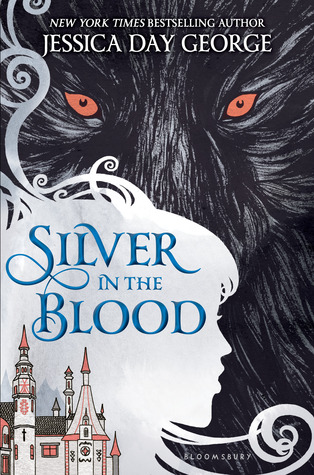Society girls from New York City circa 1890, Dacia and Lou never desired to know more about their lineage, instead preferring to gossip about the mysterious Romanian family that they barely knew. But upon turning seventeen, the girls must return to their homeland to meet their relatives, find proper husbands, and—most terrifyingly—learn the deep family secrets of The Claw, The Wing, and The Smoke. The Florescus, after all, are shape-shifters, and it is time for Dacia and Lou to fulfill the prophecy that demands their acceptance of this fate... or fight against this cruel inheritance with all their might.
With a gorgeous Romanian setting, stunning Parisian gowns, and dark brooding young men, readers will be swept up by this epic adventure of two girls in a battle for their lives.
So, George is a Utah author, but she's mostly written MG stuff. When The King's English bookstore advertised she was doing a signing for this book, I really wanted to go. But then I read some Amazon reviews, and thinking back to the last three local authors I've supported at TKE wherein it turned out the books were pretty crappy, I decided not to chance it.
This was a bad move because Silver in the Blood is pretty dang good.
Reviewers who influenced me wrongly said things like, "the author choose a way of writing that slowed the book and made it drag " and "This drag and repetition was especially noticeable because the narrative rotated between formats: letters, journal entries, telegraphs, newspaper notices and traditional story structure."
When I finally got the book from our school library and opened it to page one, I felt like shouting at these imbecile reviewers. The idiots had completely missed the point: Jessica Day George, in writing a book about a Romanian family who has the hereditary role of serving the Dracula family, has set up the book like Dracula. Duh.
It doesn't "drag." The dual points of view are not repetitive.
What these uneducated reviewers missed is that Dacia and Lou echo Lucy and Mina in Stoker's original. They are confused and kept in the dark by those who wish them to be in powerless positions. The reader is meant to know more than the girls do; it's called "dramatic irony." (Even Shakespeare used it; don't assume George is the one who doesn't know what's going on here.) Silver in the Blood is set up with multiple points of view and partly in epistle form because it alludes to Dracula. If the reader is too stupid to realize this, it is not the author's fault. It is not the author's fault if the reader is too under-educated to understand dramatic irony, multiple points of view, and literary allusions. (Note: do not even try to argue that the book is YA and that kids aren't exposed to these things, for all three are standard in the junior high curriculum.)
This whole thing reminds me of a quote I once saw in a Readers' Digest (decades ago), "It requires wisdom to understand wisdom; the music is nothing if the audience is deaf."
That being said, I will also state that the book is not five-stars, in my opinion. There were grammatical errors and modernisms in the dialogue that would simply not have occurred among the British upper crust in the 1890s. And there is one whole scene where Dacia, the stronger of the two protagonists, does not defend herself when she is quite capable of doing so and it is in her personality to do so. The whole purpose of her not defending herself appears to be because it allows the plot to move forward, but it's completely out of character for her. That I did not like much.
However, it is still an excellent book and well worth the read.
I enjoyed much of the detail about Romania that the author includes. It feels a bit strained, however, and it's clear that she's writing from recent research and not from long-term knowledge. (For example, her description of Romanian folk dress is accurate to a point, but she seems unaware of the more elaborate variations on the costume for the girls and she neglects to describe the men's folk dress in any detail. Since I've done Romanian folk dance for decades, met many Romanians at festivals when they were in costume, and own two Romanian dresses from this region, I can pick out these details. Nevertheless, I like the fact that she at least did some research.)
The feminism of so many of the male characters in the book is anachronistic, but I liked it. This book gets a thumbs up from me on showing girls thinking for themselves and solving problems.
Overall, I'd give it 4 stars. It's appropriate for about age 13 and up.
(The book feels like it needs a sequel, but I read on Goodreads that George hopes only to write a "companion novel.")
Update: 5:30 PM.
The author sent me this tweet:
Point taken, and I should have recalled they were American (I read the book a week ago.). But I still think the upper crust would have used correct grammar.
Nevertheless, I urge readers to judge for themselves.

 Jessica Day George
Jessica Day George



